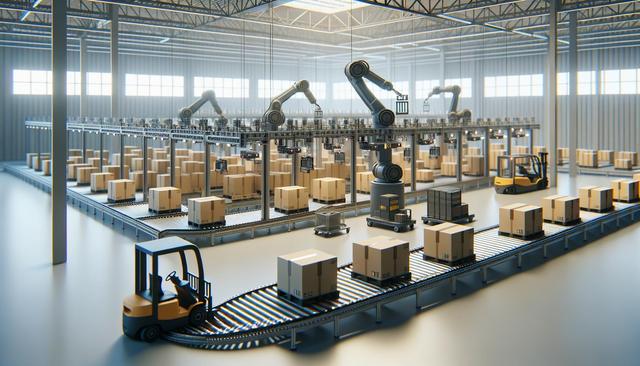Transforming Traditional Operations
Automated warehouse systems have revolutionized the way businesses manage logistics, offering a significant upgrade from traditional manual processes. In conventional warehouses, tasks such as sorting, picking, and packing involve human labor, which can lead to inefficiencies, errors, and higher operational costs. Automation addresses these issues by integrating technologies such as conveyors, robotic arms, and automated storage and retrieval systems (AS/RS) to streamline workflows. These systems allow for continuous operations with minimal human intervention, resulting in increased throughput and consistency. The shift from manual to automated processes also reduces physical strain on workers and minimizes risks associated with repetitive tasks.
Incorporating robotics and software-driven systems into warehouse operations also enables real-time tracking and inventory management. This means businesses can monitor stock levels with precision, forecast demand more accurately, and respond swiftly to changes. This level of visibility was far more difficult to achieve with traditional methods, making automation a key step forward in operational efficiency.
Boosting Picking Speed and Accuracy
One of the most critical areas where automated warehouse systems make a measurable impact is in picking operations. Traditional picking methods often involve employees walking through warehouse aisles, locating items manually — a time-consuming and error-prone process. Automated solutions such as goods-to-person systems, pick-to-light technology, and robotic pickers drastically reduce travel time and improve accuracy.
These technologies work together to optimize picking processes in several ways:
- Robotic systems can locate and retrieve items faster than human workers.
- Software algorithms ensure items are picked in the most efficient sequence.
- Integrated scanners and sensors verify each pick to prevent errors.
By minimizing errors and reducing the time needed to complete each order, automated systems enhance customer satisfaction and lower return rates. This is particularly important for e-commerce and retail businesses, where speed and accuracy are essential for maintaining competitiveness.
Enhancing Space Utilization
Automated systems also contribute to better space management within warehouses. Traditional layouts often require wide aisles and accessible shelving for human operators, but automated storage systems can be designed vertically and more compactly. This leads to improved warehouse density and allows businesses to store more items within the same physical footprint.
Some benefits of improved space utilization include:
- Reduced need for facility expansion or relocation.
- Lower heating, cooling, and lighting costs due to smaller operational areas.
- Increased inventory capacity without sacrificing accessibility.
Advanced software also plays a role in space optimization by determining the best storage locations for each item based on size, frequency of access, and other factors. This strategic placement of inventory ensures that frequently picked items are easily accessible, further boosting operational efficiency.
Data-Driven Decision Making
Another advantage of automated warehouse systems is the wealth of data they generate. Every movement, transaction, and operation is tracked and recorded, providing valuable insights that can inform strategic decisions. Warehouse managers can analyze this data to identify patterns, forecast demand, and optimize labor and equipment usage.
Key areas where data from automation can drive improvements include:
- Inventory turnover rates and reorder points.
- Equipment maintenance schedules to reduce downtime.
- Performance metrics for continuous improvement initiatives.
Machine learning algorithms and artificial intelligence can further enhance decision-making by identifying inefficiencies and suggesting changes in real time. This level of intelligence turns warehouses into adaptive environments capable of evolving with market needs.
Scalability and Flexibility
Automated warehouse systems are designed with scalability in mind, making them ideal for businesses experiencing growth or seasonal demand fluctuations. Unlike manual systems, which often require significant labor adjustments and retraining, automation can be scaled up or down with minimal disruption. Adding new picking robots or expanding storage modules can be done incrementally, allowing operations to adapt quickly to changing requirements.
Moreover, automation offers flexibility in handling different types of products and order profiles. Whether a warehouse deals with small electronics, bulky items, or temperature-sensitive goods, automated systems can be configured to meet specific storage and handling needs. This adaptability makes automation a valuable asset across a wide range of industries, from retail and manufacturing to pharmaceuticals and food distribution.
Conclusion
For businesses aiming to improve their warehouse operations, automated warehouse systems offer a practical and forward-thinking solution. By enhancing picking speed and accuracy, optimizing space, enabling data-driven decisions, and providing scalable infrastructure, these systems support long-term growth and operational excellence. As technology continues to advance, the role of automation in warehousing is set to expand, offering even more opportunities for efficiency and innovation.




Leave a Reply